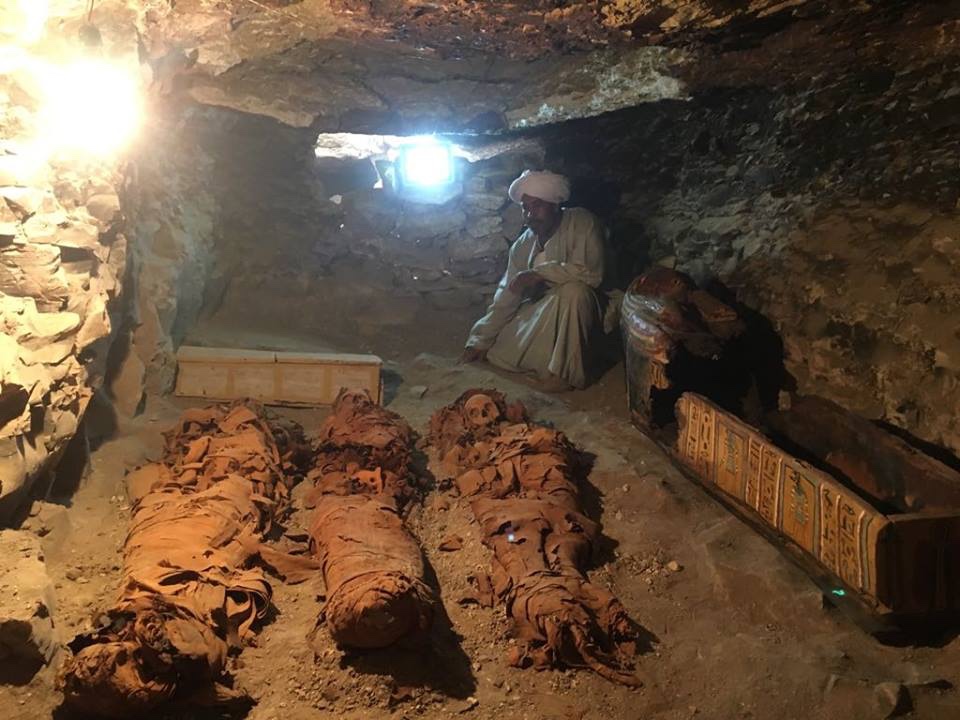Ancient Goldsmith's Tomb Filled with Mummies Discovered in Luxor

A 3,500-year-old tomb built for a goldsmith named Amenemhat and his wife Amenhotep has been discovered at the ancient cemetery of Dra' Abu el-Naga in Luxor, the Egyptian antiquities ministry announced today (Sept. 9) at a news conference in Luxor.
Inside the tomb were the remains of several mummies, wooden coffins, skeletal remains, pottery and small statues, according to photos released by the ministry. Jewelry and shabti figurines — which did the work of the deceased in the afterlife — were also found in the tomb, officials said. [See Photos of the Excavation and Goldsmith's Tomb]
Hieroglyphic inscriptions found inside the tomb reveal that it was originally built for a man named Amenemhat, who was a goldsmith. The inscriptions say that his wife was named Amenhotep, a name typically used in ancient Egypt for a man, officials said. However, the inscriptions said that Amenhotep held the title "lady of the house." It's unclear why Amenhotep had a name usually used for men in ancient Egypt.
The couple lived in the 15th century B.C., during the 18th dynasty, which is part of a period in Egypt's history that modern-day scholars call the New Kingdom, Khaled El-Enany, Egypt's antiquities minister, said during the news conference. During the New Kingdom, Egypt was united under a single pharaoh, and Egypt's power was on the rise.
The tomb was later reused during the 11th and 10th centuries B.C., during the 21st and 22nd dynasties, a time that modern-day scholars call the Third Intermediate Period, El-Enany said during the news conference. Egypt was not always united during the Third Intermediate Period, and at times, part of the country was ruled by Libyan groups.
Excavations inside the tomb are ongoing, and more discoveries will likely be announced in the next month, El-Enany said.
The tomb was discovered by an Egyptian antiquities ministry team led by Mostafa Waziri, the head of the ministry's Luxor department. In April, Waziri's team discovered the tomb of a judge at Dra' Abu el-Naga; Waziri believes that four more tombs will be found close to where the goldsmith's tomb is located, he said during the news conference. "If we keep digging, we'll find four more tombs in the area," Waziri said, adding, "Wish us luck."
Sign up for the Live Science daily newsletter now
Get the world’s most fascinating discoveries delivered straight to your inbox.
Amenemhat's tomb is the second tomb belonging to an Egyptian goldsmith that has been found so far this year. In June, Live Science reported that another tomb belonging to an Egyptian goldsmith had been discovered on Sai Island, in what is now Sudan.
Originally published on Live Science.

Owen Jarus is a regular contributor to Live Science who writes about archaeology and humans' past. He has also written for The Independent (UK), The Canadian Press (CP) and The Associated Press (AP), among others. Owen has a bachelor of arts degree from the University of Toronto and a journalism degree from Ryerson University.










